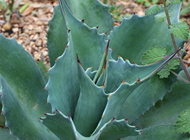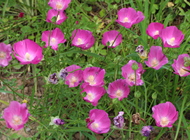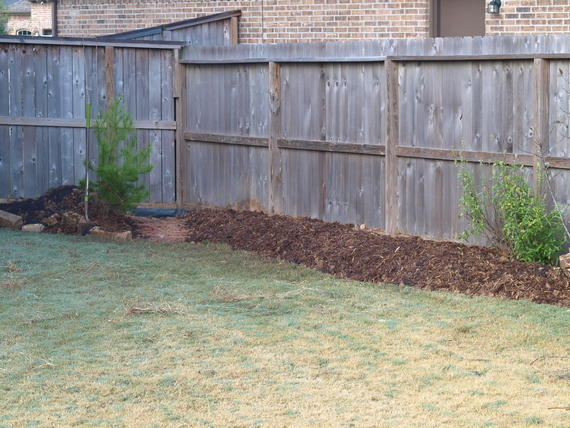 |
Garden journal entry |
 |

The last bit of left fence border completed |
November 24, 2018. Yippee! It's taken me a little over two years, but I can declare (near) victory: the intersection between fence and lawn is just about eliminated, with a healthy width of border separating the two along the entire fenceline except for a short section in a utility area on the right where there isn't enough room to do so. Up till a week ago, the biggest stretch where lawn and fence met was along the fence separating our yard from the neighbors to the left. In previous projects, I had managed to wrap the ever-extending border around from the back fence to more than half-way along the left fence – but the last bit involved somewhat of a problem area: the awkward corner between the left and front fence, which I'd used as a dumping-ground for left-over sod from various earlier projects. It also included a lone Virginia pine planted right in the lawn. All of that made for difficult mowing and poor aesthetics, so it was about time I tackled it. I decided to create a generous sweeping border that included the pine and extended the gently curving left fence border.
A new aspect to this project, compared to earlier border construction efforts, was that it featured a civil engineering component: Here in the Houston area, all back yards are sloped to create a swale for rainfall (including the water gushing from the downspouts) to find its way out to the street in front of the house and ultimately to a storm drain. We already knew the pitfalls of interrupting the swale from our pond installation a couple years ago: a soppy puddle forms in the lawn to the left of the pond after every significant rainstorm, because the water cannot run off to the right. With the current project, the consequences of messing with the swale would be worse, because well over half the water falling on our property exits at the lowest point right at the corner of the new border. Whenever I construct a new border, I make sure to build up, since poor drainage is hazardous to plant health during Houston's soggy seasons. But building a fully elevated border here would have been ill advised, sure to create a deep puddle in the lawn, and a perpetual source of soil erosion and mulch wash-away. So in this case, I elevated nearly all of the border, but created a diagonal spillway out to the corner with concrete pavers. It doesn't look particularly attractive right now, but I bet that with some billowy plants alongside, it will be hardly noticeable.
I had to think about the below-ground as well: my method of border construction involves excavating about a shovel blade's height into the compacted clay soil and replacing it with a layer of stripped sod and a crumblier, organic-amended soil mixture. Concerned that the bottom of my border, resembling a bathtub with nearly impervious walls and bottom, would fill up with water after every drenching rainstorm we get, I wanted to provide a path for water to flow outward down below as well. So I replaced the soil underneath the spillway with a generous vein of sand, extending to just the other side of the fence, where the ground slopes significantly down to the street level.
I don't know yet if any of this will work as intended, but I'll be paying attention after the next monsoon, and can make adjustments at least to the visible bits afterwards. I don't yet have much plant material to fill the new borders – but I doubt that will be a problem come spring! |
Last modified:
September 09, 2009
Contact me
|